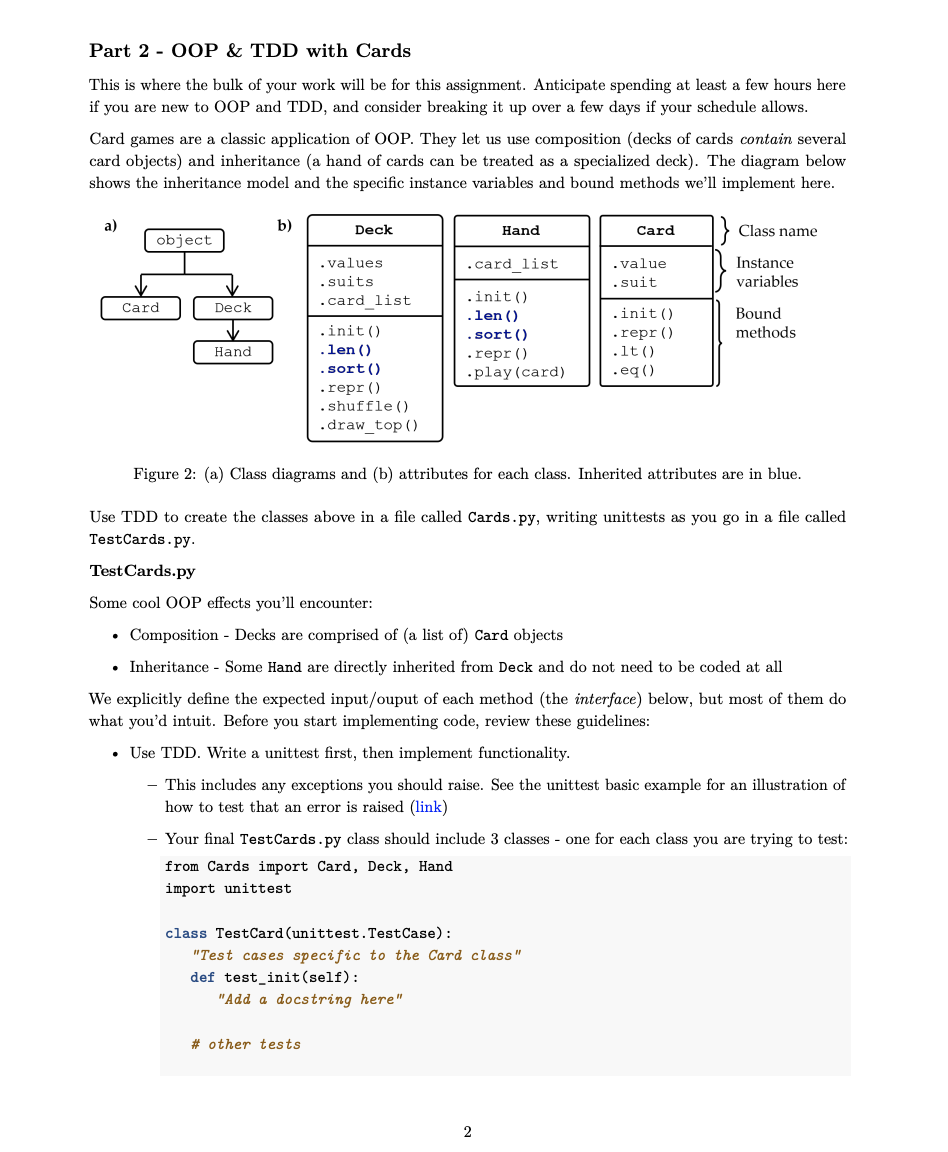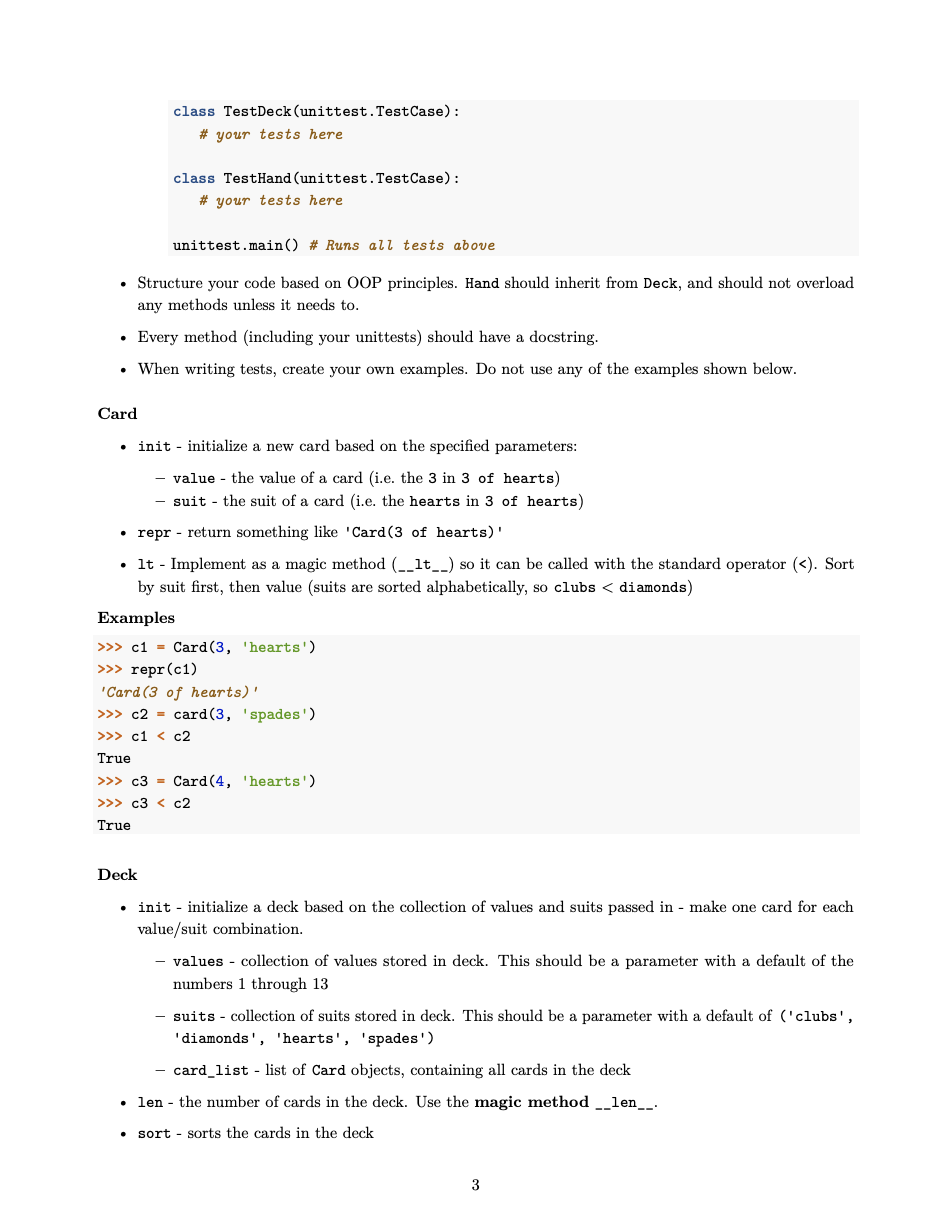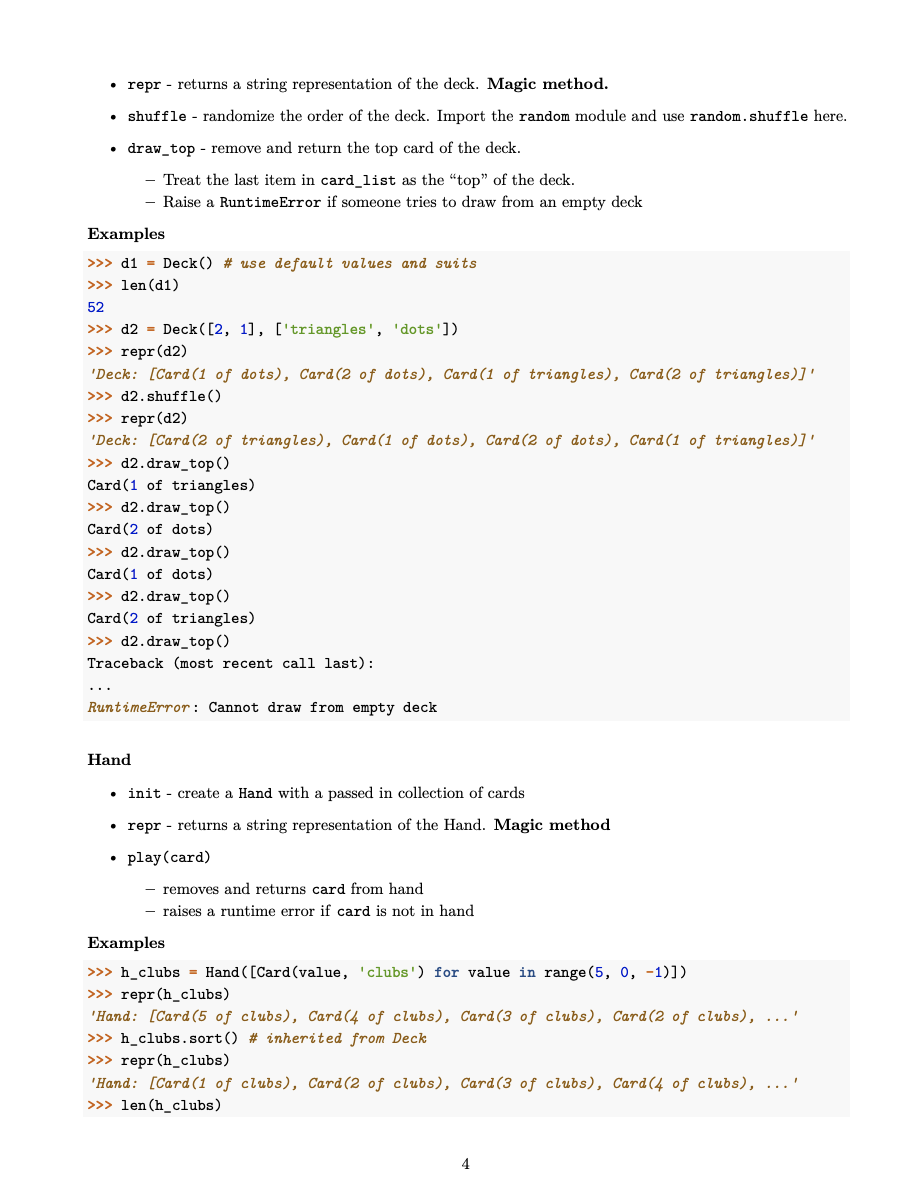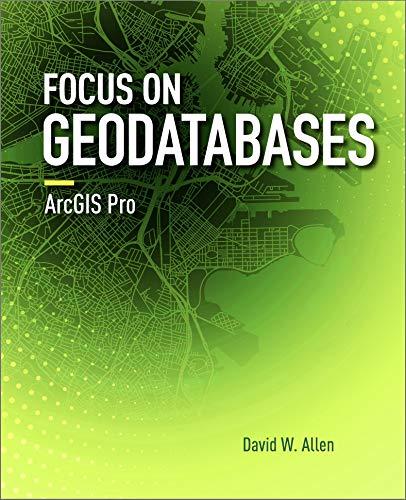


Part 2 - OOP \& TDD with Cards This is where the bulk of your work will be for this assignment. Anticipate spending at least a few hours here if you are new to OOP and TDD, and consider breaking it up over a few days if your schedule allows. Card games are a classic application of OOP. They let us use composition (decks of cards contain several card objects) and inheritance (a hand of cards can be treated as a specialized deck). The diagram below shows the inheritance model and the specific instance variables and bound methods we'll implement here. ,) Figure 2: (a) Class diagrams and (b) attributes for each class. Inherited attributes are in blue. Use TDD to create the classes above in a file called Cards.py, writing unittests as you go in a file called TestCards.py. TestCards.py Some cool OOP effects you'll encounter: - Composition - Decks are comprised of (a list of) Card objects - Inheritance - Some Hand are directly inherited from Deck and do not need to be coded at all We explicitly define the expected input/ouput of each method (the interface) below, but most of them do what you'd intuit. Before you start implementing code, review these guidelines: - Use TDD. Write a unittest first, then implement functionality. - This includes any exceptions you should raise. See the unittest basic example for an illustration of how to test that an error is raised (link) - Your final TestCards.py class should include 3 classes - one for each class you are trying to test: from Cards import Card, Deck, Hand import unittest class TestCard (unittest. TestCase): "Test cases specific to the Card class" def test_init(self): "Add a docstring here" \# other tests class TestDeck (unittest. TestCase): \# your tests here class TestHand (unittest.TestCase): \# your tests here unittest.main() \# Runs all tests above - Structure your code based on OOP principles. Hand should inherit from Deck, and should not overload any methods unless it needs to. - Every method (including your unittests) should have a docstring. - When writing tests, create your own examples. Do not use any of the examples shown below. Card - init - initialize a new card based on the specified parameters: - value - the value of a card (i.e. the 3 in 3 of hearts) - suit - the suit of a card (i.e. the hearts in 3 of hearts) - repr - return something like 'Card(3 of hearts)' - lt - Implement as a magic method (__lt__) so it can be called with the standard operator (c1=Card(3, 'hearts' ) repr(c1) 'Card ( 3 of hearts)' >c2=card(3, 'spades ) >c1
c3=Card(4, 'hearts' ) >c3









